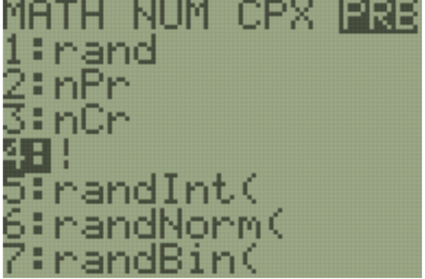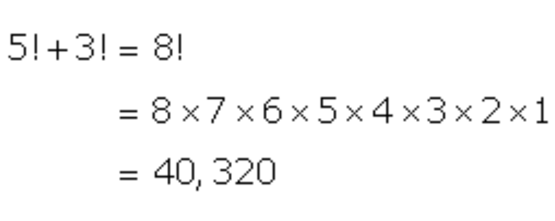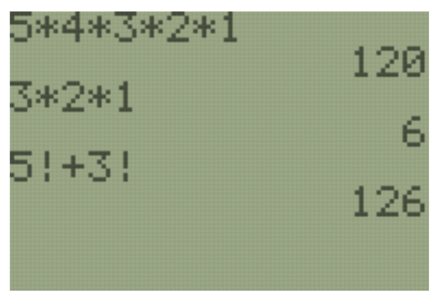Factorial Notation, Formula, and Basic Examples
When I first encountered an algebra problem with the exclamation mark “!“, I thought it was a trick question. I didn’t know how to handle it because I had no idea what it meant. As you know, symbols in math are everything. The key is to recognize that each mathematical symbol has an implied meaning. Most of the time, it suggests some kind of operation that tells us what to do with a number. The best way to understand how it works is to look at a specific example.
Suppose you are asked to evaluate [latex]5![/latex] which is read as “five factorial“.
You can approach this in two ways.
Two Ways to Evaluate the Factorial of a Number
- Counting Down:
Start with the number 5, then count down until you reach 1. Then multiply those numbers to get the answer.

- Counting Up:
Or, you may do it the other way around. Begin by counting from 1 until you reach the target number which in this case is 5. Multiply those factors to obtain the answer.

So here’s the general formula of factorial that I think you need to remember. It doesn’t matter which one you use to solve a problem, the answer will come out the same. However, the first one is the “preferred” way so ask your teacher if you’re not sure.
Two Ways to Expand the Factorial of the Variable n Written as n!

Before we go over some worked examples, remember the special rule that “zero factorial is equal to one“.

See our separate lesson that shows Zero Factorial is equal to one.
Examples of How to Evaluate Factorials involving Whole Numbers
Example 1: Evaluate the factorial expression 6!.
If you decide to use the descending format of whole numbers, count down from six until one then get their product. That’s all there is to it.
This is considered as the “full expansion” of 6! because we list down all its factors, that is, starting from the given number 6 and decreased by 1 in every sequence until we reach the number 1.

Example 2: Evaluate the factorial expression 7!.
This next example is intended to illustrate that you can easily solve a factorial problem by using the value from the previous calculation. You don’t have to always write out all the factors because it can become tedious and redundant in no time.
To solve for 7!, I will expand the expression until I see six factorial, 6! , because we already know its value which is 6! = 720.
Since we don’t list all the factors of 7! , we may consider this is a “partial expansion”.

Some calculators such as TI-84 have the capability to quickly compute for the factorial of any number. The command is usually located under the Probability menu.


Example 3: Simplify the expression 5! + 3!.
I see some students commit this common error when dealing with the addition of factorials. They treat this problem just like adding regular variables, i.e. 5x + 3x = 8x. That’s absolutely incorrect.
- Wrong Solution:

- Correct Solution:
What you should do instead is to evaluate each factorial separately then add them together.

Checking our answer with a calculator,

You may also be interested in these related math lessons or tutorials:
Dividing Factorials
Simplifying Factorials with Variables
Zero Factorial
